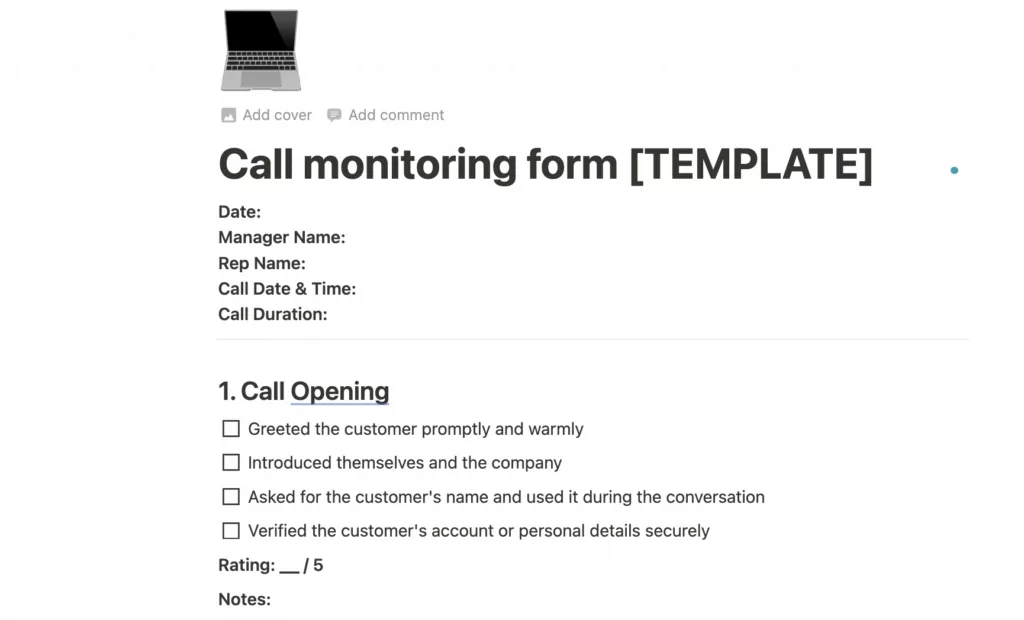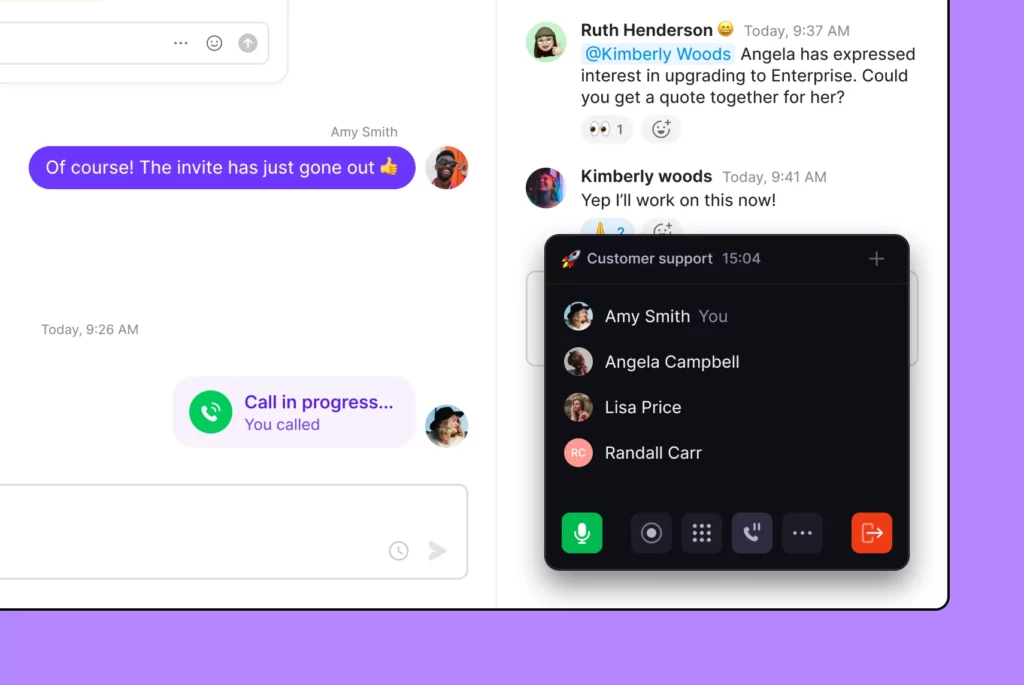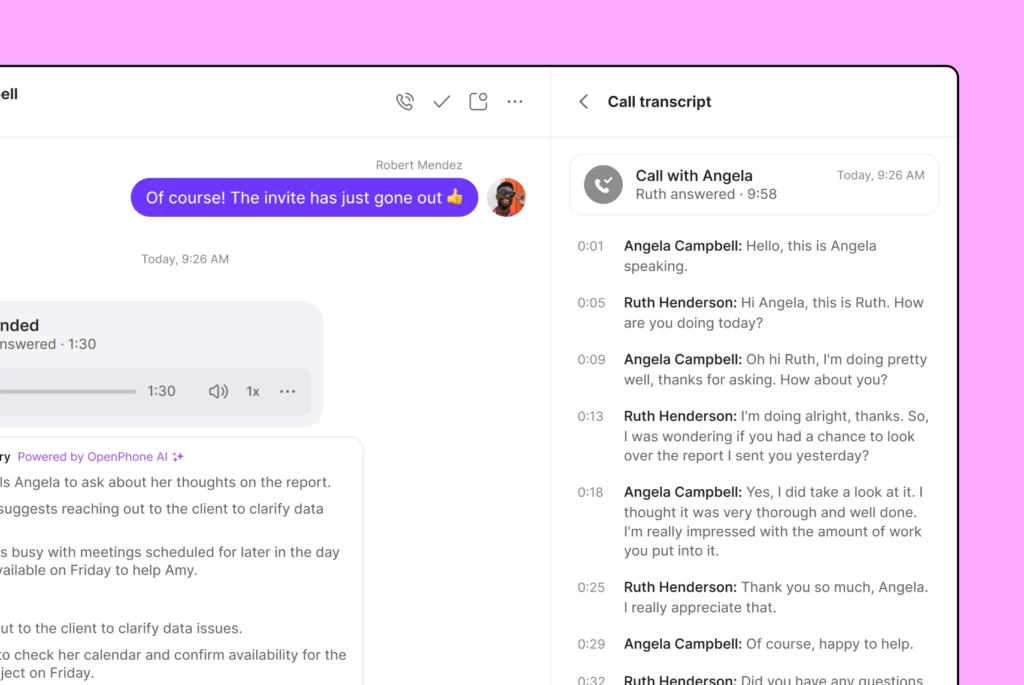Establishing high-quality customer service takes a lot of effort, from people to tools to processes. Customer service management and teams should be proud when they provide excellent service to their customers.
However, for many companies, reaching a level of high-quality service might only be a snapshot in time. According to a 2023 report, 35% of customer service professionals said maintaining support quality is a crucial challenge while scaling a team. It’s hard to maintain excellent service when you’re adding new people and adapting to an increased volume of support calls.
One way you can maintain the quality of your phone support is with call monitoring forms. A call monitoring form is a checklist to review and monitor calls between your support reps and your customers. With a call monitoring form, you can ensure your reps deliver high-quality service by adhering to your quality standards and criteria.
In this article, we’ll cover what you should include in a call monitoring form (and why!), along with a few more tactics for maintaining call quality as you scale.
Key criteria for a call monitoring form
While every business is unique, your customers have some baseline expectations for phone interactions with customer service.
Here’s what you should include on your call monitoring form and what you should consider for each criterion.
- Call etiquette: How do reps open and close each call? Do they welcome customers when a call begins? Are they ending calls politely?
- Solutioning: Are reps providing accurate and complete solutions to customers’ questions or problems? Do they point customers toward additional resources that may be helpful?
- Conversational skills: Are your reps empathetic? Do they speak professionally and at a good pace (not too fast)? Are they using language that’s easy to understand?
- Post-call actions: Are reps following the proper processes for logging tickets? Are they accurately categorizing and tagging tickets? Are they completing necessary follow-ups with the customer?
Within each of these, you can add company policies or other evaluation criteria. For example, you may have brand-specific guidelines for opening calls, such as “Thank you for calling XYZ company, my name is…” Or you may have specific steps for call handling if a ticket needs to be escalated. You can add these to your call monitoring form to track whether a rep is following a specific process.
Call monitoring form template
Looking to create a call monitoring form for your company? We’ve got you covered!

Check out our template, which you can easily modify for your own call evaluations.
Internal Quality Score (IQS): The quality metric that matters
If you’re leading a customer service team, you might be familiar with KPIs like customer satisfaction score (CSAT) or net promoter score (NPS). Both are great for monitoring how your customers feel about the service they receive.
However, to maintain a consistent level of service, your internal quality score (IQS) matters more. Internal Quality Score is a customer service metric that shows you how well your team performs based on internal quality standards. You can use ratings from your call monitoring form (such as a scale of 1 to 5) to calculate IQS.
At OpenPhone, we use Klaus as a call monitoring tool. Here’s how Klaus calculates it:
To calculate the IQS score for a single conversation, sum up all ratings and divide them by the maximum available score multiplied by the total number of categories.
(Sum of ratings / [Maximum available score x Number of categories]) x 100 = IQS (%)
Then, repeat the process with a representative sample of your tickets to calculate IQS for your entire support team.
Want to get started measuring your IQS? Here’s a Google Sheets template
How to avoid call monitoring mistakes
While your call monitoring form provides a great list of things you should do and look out for, there are also things you shouldn’t do.
As you know, your reps are often the “face” of your company to the customer. It’s important to develop a call monitoring program that focuses on improving call quality with their input instead of providing a top-down approach they have to follow.
Get buy-in from leadership
As you create a call monitoring program for your business, make sure you’re monitoring things your leadership team cares about. For example, if security is a priority for your business, your reps should follow all security protocols, such as verifying customer accounts. Or maybe your leadership team wants reps to be more casual and doesn’t care as much about following a specific script for starting and ending calls.
If you don’t have leadership buy-in for your call quality monitoring criteria, you’ll end up monitoring the wrong things, which will affect your call quality experience down the line.
Sit down with your leadership team to understand what’s important to them. Emphasize that call monitoring will help you prioritize their objectives. You’ll also want to discuss a coaching cadence — how often you’ll work with individual customer support reps or the team as a whole based on how far off you are with your team’s goals.
You can also bring evidence from your CSAT or other customer feedback to highlight the areas that need improvement (as well as what’s working). Let leadership know you’ll include improvement areas as criteria for call quality monitoring.
Refine your call monitoring forms based on rep feedback
Selecting call monitoring form criteria isn’t a one-and-done process. You’ll need to refine it over time as your organization grows or your processes change — and as you consider its impact on your reps.
Let your reps know what you’re measuring and why. If your reps are confused about a quality metric, it’s probably a sign you need to clarify the expectations. A “polite greeting” might mean different things to different reps, so provide examples or point the reps to internal guidelines.
At OpenPhone, one of the metrics for our customer service team was efficiency: whether reps were being efficient with time and resources. The problem with measuring efficiency was that it had too many variables depending on the customer service request. Some requests simply take longer to close out than others. We found it challenging to measure rep performance accurately based on this metric, so it didn’t provide value to our IQS. Reps found it hard to understand how they could meet our benchmark without compromising service quality.
Eventually, we realized that efficiency was too broad a metric, so we removed it from our evaluation process.
Dig into the solutions your reps provide
A common mistake we’ve seen customer service teams make is to breeze through a provided solution without really evaluating it. Or someone measuring call quality checks the box that says, “Was a solution provided?” without reviewing whether it was the right solution or the best solution.
Your reps should address the root cause of the customer’s issue, which may not be what the customer initially states. They should also proactively address additional questions that may come up during a call. Internally, they should be able to determine if the customer’s issue has a downstream impact on other customers and follow up with the appropriate manager or team.
If you take your rep’s solutions at face value, you might miss opportunities to provide feedback or coach them to take solutions a step further. Expert solutioning can easily take a customer’s call from “meets expectations” to “delights the customer” and improve the overall customer experience.
3 additional ways to maintain your call quality
While call quality monitoring can help you maintain high levels of customer service call quality, it’s only one tactic.
Here are some additional strategies you can use with your call monitoring forms to improve call quality:
1. Identify macro-level trends
As you review calls, you might find that multiple reps have similar issues. They might not be following good phone etiquette or might provide incorrect solutions.
If that’s the case, you can address these issues through better onboarding or by providing ongoing training to the team. Emphasize communication and listening skills, especially if your reps don’t have a lot of prior customer service experience.
Pro Tip: Call monitoring is also a great way to uncover different use cases for your product, which you can then feed back to your marketing or product team.
2. Shadow live calls with your business phone platform
Call monitoring is great for evaluating calls after they happen. You can complete your call monitoring form, taking the time to review calls in batches or on a regular rotation.
But sometimes, a rep needs to learn from colleagues to take their performance to the next level. Call shadowing is an excellent way for reps to learn from their peers. Less experienced team members silently attend customer service calls and can observe how more seasoned team members work on problem-solving customer requests.
With OpenPhone, you can organize group calls to have reps listen to customer calls while muted. Reps can listen remotely with a phone or a computer — no need to be in the same location or buy fancy hardware.

Pro Tip
💡Here’s a structured call shadowing process if you’re looking to implement this tactic within your team.
3. Run call review sessions with your team
Another way you can maintain call quality is by conducting call review sessions. In a call review session, you share lessons from past calls in a group setting. Team members can collectively review what a rep did well and where they can improve.
With a business phone platform like OpenPhone, you can review calls instantly with AI-powered call transcriptions. Skim through call transcripts and highlight sections of the conversation that are great examples of coaching opportunities with your team.

Revamp your tech stack with call monitoring software
Call monitoring forms help you evaluate your team’s call quality consistently but add paperwork to your process. Whether it’s a piece of paper or a digital form, you have to fill it out for each call to evaluate a rep’s performance. This might work if your team only has a few reps, but it becomes inefficient with a larger team and high call volumes.
Call monitoring software can replace your forms so you can track rep performance efficiently. These tools can integrate with your help desk software to capture ticket data for added evaluation.
If you’re looking for call monitoring software, check out our guide to the 12 best call monitoring tools of 2024.
